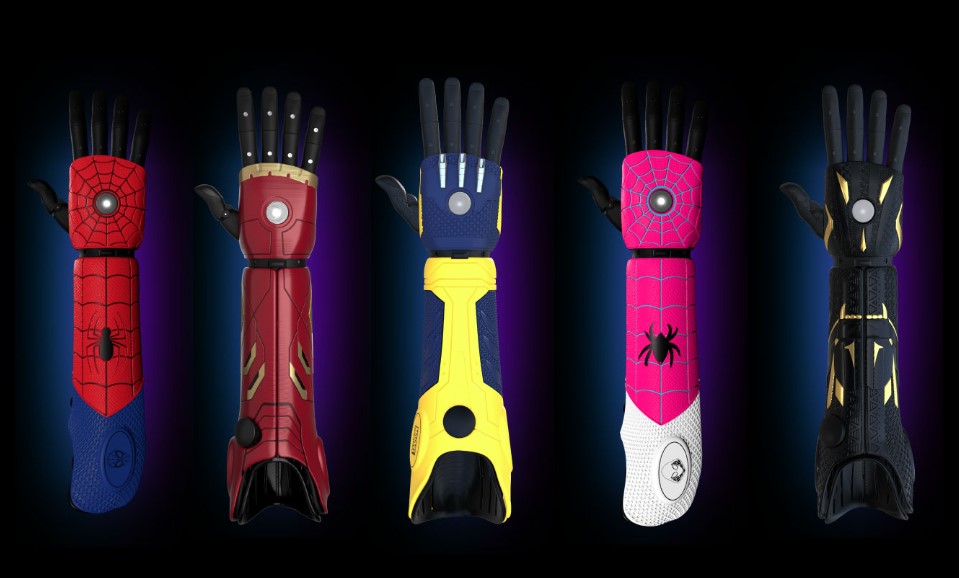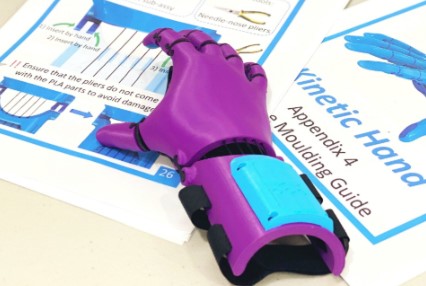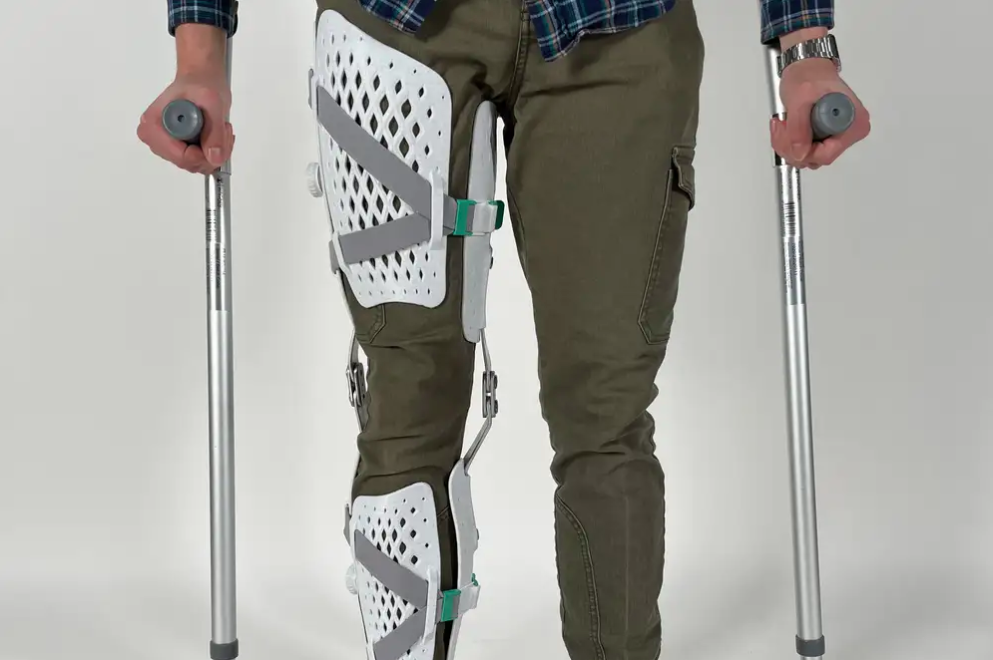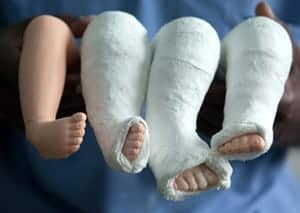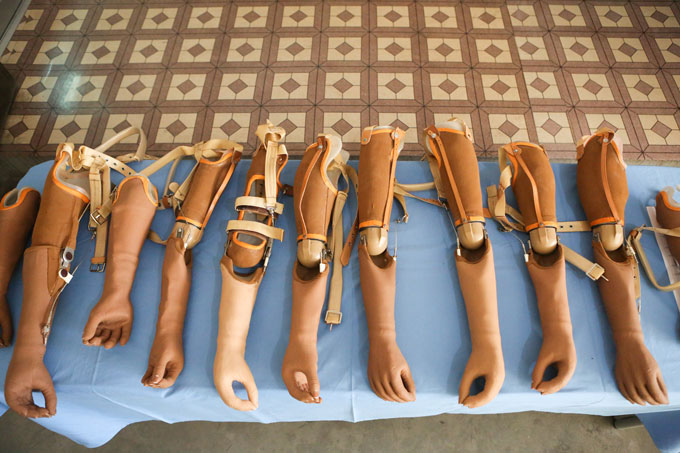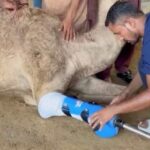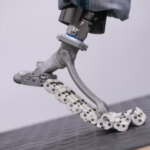Now Reading: Revolutionary Wearable Robotic Technology Solves 200-Year-Old Prosthetic Limb Problem
-
01
Revolutionary Wearable Robotic Technology Solves 200-Year-Old Prosthetic Limb Problem
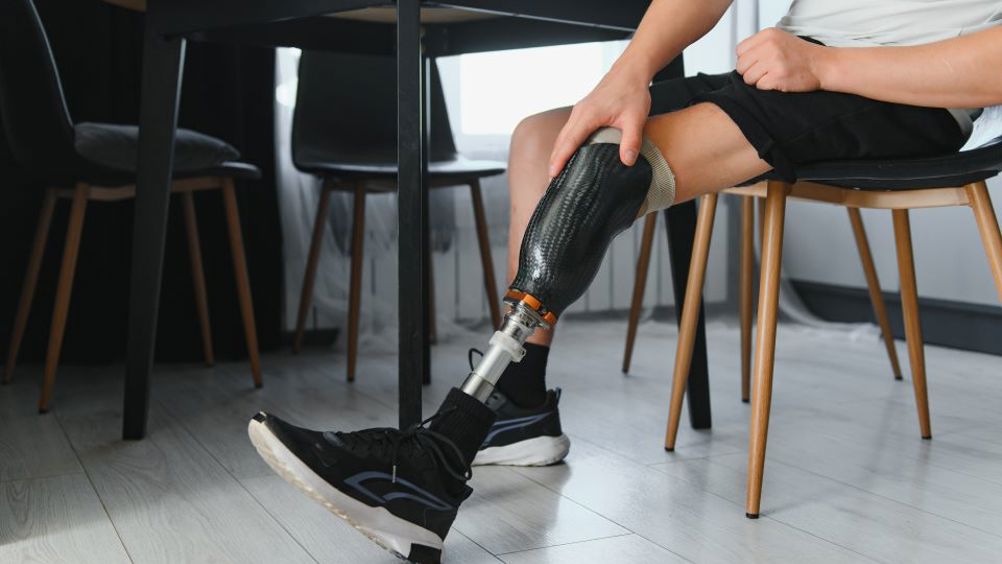
Revolutionary Wearable Robotic Technology Solves 200-Year-Old Prosthetic Limb Problem
A groundbreaking advancement in wearable robotic technology is set to transform the lives of amputees by addressing a long-standing issue with prosthetic limbs. Researchers at Imperial College London have developed a new material called Roliner, which allows users to adjust the shape, volume, and stiffness of the liner that connects a prosthetic limb to their residual leg. This innovation, which can be controlled via a smartphone in real-time, promises a more comfortable and personalised fit for prosthetic users.
After eight years of prototype development and clinical trials, the team at Imperial’s Department of Bioengineering has published their findings in Nature Communications. The patented material, Roliner, is the world’s first adaptive prosthetic liner, capable of dynamically responding to changes in the human body throughout the day.
A Persistent Problem Solved
Prosthetic limbs have long been plagued by issues of poor fit, leading to discomfort, blisters, sores, and even infections. These problems often force amputees to abandon their prosthetics and return to using wheelchairs. Dr. Firat Guder, Principal Investigator at Imperial College London, explained: “Prosthetic limbs are often uncomfortable because they have a fixed rigid shape. Even though this shape can be moulded to fit the individual’s body at the time of fitting, it cannot adapt responsively to how our bodies change.”
Dr. Uğur Tanriverdi, co-founder of Unhindr, the wearable robotics company producing Roliner, added: “Badly fitting prosthetic limbs are a constant struggle for amputees. They increase the risk of blisters and sores that can become infected, and the situation can become so painful that there is no choice but to go back to using a wheelchair. This not only causes physical pain but also impacts mental health, as amputees are unable to live as independently and freely as they deserve.”
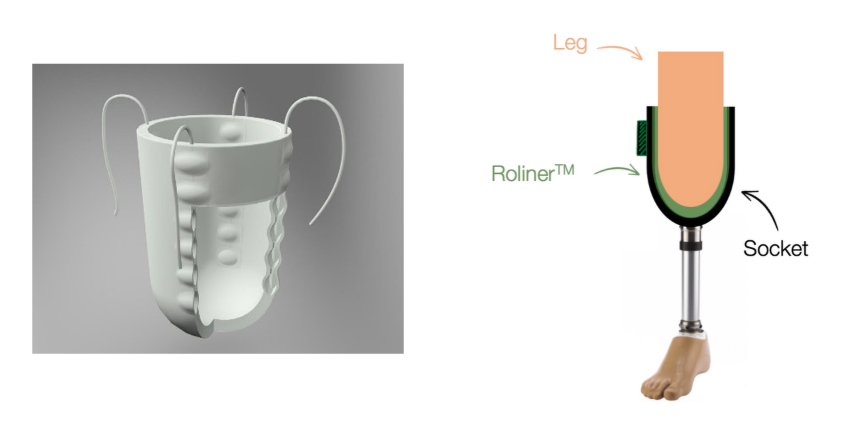
How Roliner Works
Roliner is made from silicone elastomers with embedded channels that can be pressurised to alter the material’s properties. “Just like a basketball, it becomes bigger and more rigid when it is inflated, and smaller and softer when it is deflated,” Dr. Tanriverdi explained. This adaptability allows the liner to respond to changes in the body, such as weight fluctuations, hormonal shifts, or even the type of activity being undertaken. For example, a user might prefer a looser fit while sitting and a tighter fit while walking.
The technology also incorporates artificial intelligence, enabling the liner to ‘learn’ the user’s preferences and automatically adjust its properties. This data-driven approach standardises the quality of prosthetic fittings, moving away from traditional plaster casting and moulding techniques that have been used for centuries.
Beyond Prosthetics: Broader Applications
The researchers believe Roliner’s potential extends far beyond prosthetics. Its ability to create a seamless interface between rigid materials and the human body could revolutionise other fields. For instance, it could enhance the flexibility of exoskeletons used in rehabilitation, modulate pressure points on hospital beds, or improve the fit and safety of protective gear such as ski boots and astronaut wearables.
Guglielmo Senesi, the Imperial engineer behind Roliner’s electronics and clinical data architecture, said: “Currently, most prosthetists still rely on outdated techniques. Roliner’s data-driven approach standardises the quality of prosthetic fittings, ensuring a more personalised and comfortable experience.”
Tarek Asfour, Chief Operating Officer of Unhindr, highlighted the broader implications of the technology: “Roliner marks the shift from rigid mechanics to soft, adaptive robotics, proving that the future of prosthetics isn’t just about movement – it’s about seamless human integration.”
Availability and Future Prospects
The researchers aim to make Roliner available for use in the UK by the end of 2025. This innovation represents a significant step forward in wearable robotics, offering amputees greater comfort, independence, and quality of life.
The study, titled “Dynamically adaptive soft metamaterial for wearable human–machine interfaces”, was published in Nature Communications and authored by Ugur Tanriverdi, Guglielmo Senesi, Tarek Asfour, Hasan Kurt, Sabrina L. Smith, Diana Toderita, Joseph Shalhoub, Laura Burgess, Anthony Bull, and Firat Güder.
With Roliner, the future of prosthetics is not just about restoring movement—it’s about creating a seamless connection between technology and the human body.

